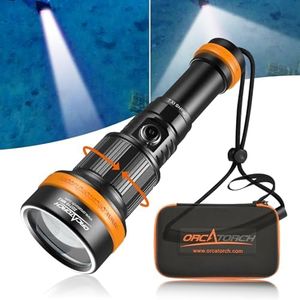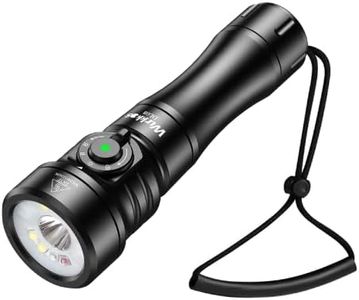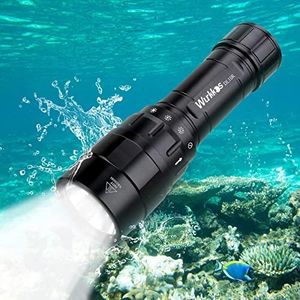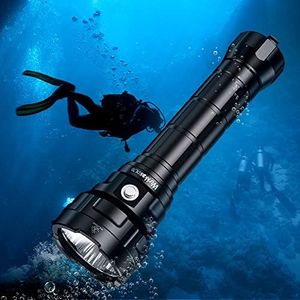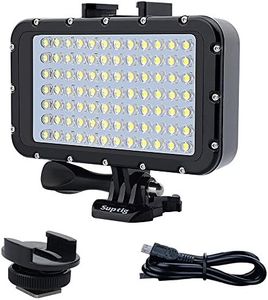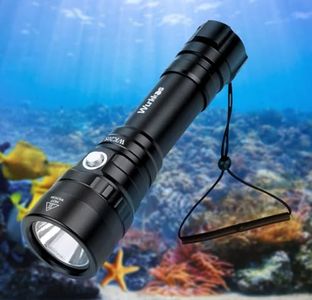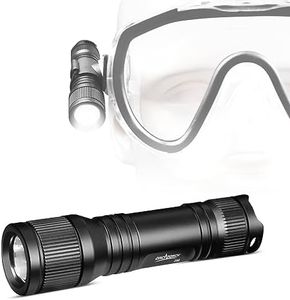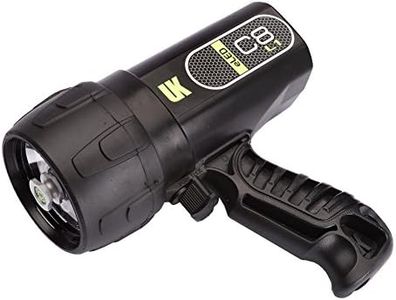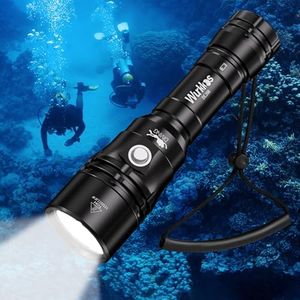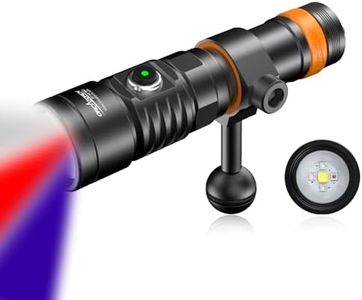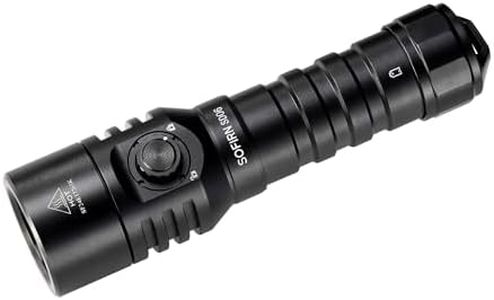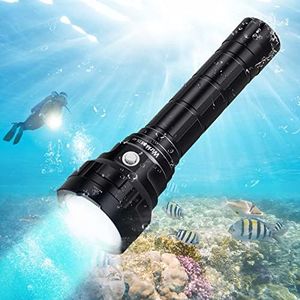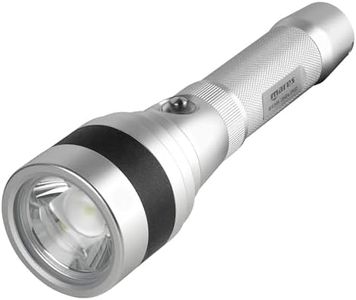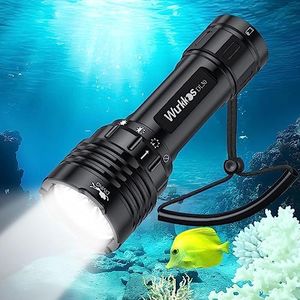We Use CookiesWe use cookies to enhance the security, performance,
functionality and for analytical and promotional activities. By continuing to browse this site you
are agreeing to our privacy policy
10 Best Dive Lights
From leading brands and best sellers available on the web.Buying Guide for the Best Dive Lights
Choosing the right dive light is important for both safety and enjoyment when exploring underwater environments. Dive lights help you see clearly in dark or murky water, bring out the true colors of marine life, and help you communicate with your dive buddy. When shopping for a dive light, understanding its main features will help you find one that fits your needs, whether you're looking for a primary light, a backup, or a light for night diving, wrecks, or photography.Brightness (Lumens)Brightness, measured in lumens, indicates how much light the dive light produces. A higher lumen number means a brighter light, which helps you see further or illuminate a larger area. Lower-lumen lights (under 300 lumens) are typically okay for murky water or as backup lights. Mid-range lights (300 to 1000 lumens) are great for standard recreational dives or as primary lights for most divers. High-output lights (over 1000 lumens) are best when diving in very dark environments, like night dives, wrecks, or caves. Choose a brightness level based on the diving you plan to do, as too much light can sometimes cause backscatter in murky water, while too little can make it hard to see.
Beam AngleBeam angle describes how wide or narrow the light beam coming from the torch is. Narrow beams (around 8–12 degrees) create focused spots that reach farther, making them perfect for looking into crevices, signaling, or diving in clear open water. Wide beams (20 degrees or wider) spread light over a bigger area, which helps when you want to illuminate more of your surroundings or are shooting underwater photos. Picking the right beam angle depends on your dive style: for exploring and signaling, narrow is good; for navigation and visibility, especially in groups or for taking pictures, go wider.
Burn TimeBurn time refers to how long the dive light can stay on at a certain brightness before the battery runs out. Shorter burn times (1–2 hours) may be fine for short dives, but for longer or multiple dives in a day, lights with longer burn times (over 3 hours) are safer and more convenient. Consider your typical dive duration and whether you'll need your light for extended periods. For backup lights, burn time can usually be shorter, but for a primary light, longer burn time gives you peace of mind.
Battery TypeDive lights use different battery types, including disposable (like AA or CR123) and rechargeable (built-in lithium or removable cells). Disposable batteries are easy to swap in the field, but you'll need to carry spares. Rechargeable batteries are more cost-effective over time and environmentally friendly, but require recharging between dives. Your choice depends on convenience: for frequent or travel divers, rechargeable might be better; for emergencies or as a backup, disposables are reliable.
Switch TypeSwitch type refers to how you turn the light on and off, with common types including twist, push-button, or sliding switches. Twist switches are simple and usually more waterproof, making them less likely to accidentally turn on. Push-buttons and sliders can be used one-handed and often include modes for different brightness levels. Think about how you'll be using the light—twist for security if you’re worried about leaks or accidental activation, and buttons or sliders for convenience if you’ll be changing brightness or using gloves.
Depth RatingDepth rating tells you how deep the dive light can go while still functioning properly. Shallow-rating lights (up to 30 meters) are suitable for recreational divers, while deeper ratings (over 100 meters) are needed for technical divers or those exploring deep wrecks or caves. Pick a dive light that meets or exceeds the maximum depth you plan to reach, as using a light below its rated depth can cause leaks or failure.
Size and WeightThe size and weight of a dive light affect how easy it is to carry and handle underwater. Compact, lightweight lights are easier to store and handle, making them perfect as backups or for travel. Larger, heavier lights may offer longer battery life or more brightness but can be cumbersome. Choose a size and weight that feels comfortable in your hand and won’t weigh you down, especially during longer dives.
